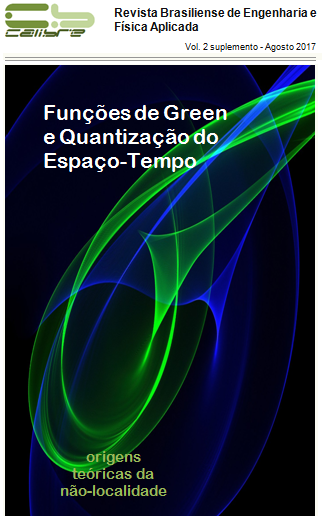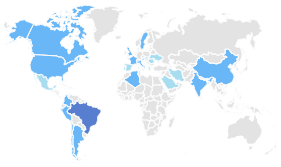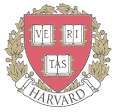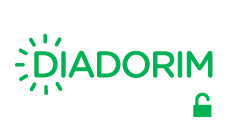
Thesaurus Theoriis Circa Gravitatis et Cetera (Thesaurus of Theories on Gravity and so Forth)
Resumo
Thesaurus Theoriis Circa Gravitatis et Cetera is a compilation subdivided into two chapters, containing the complete research developed during author's post-doctoral period at the Brazilian Center of Physics Research - CBPF, Rio de Janeiro (2016 - 2017). From the heated discussions that took place in a climate of intense knowledge exchange, additions were made to the original text, making it more translucent to the readers.
In the first chapter, the lecture notes related to the Summer Formative Activities -- 2017 were meant to compile the main ideas on gauge field theory and modern cosmology, showing the recent contributions of the author in these areas, including classical thermodynamics, supergravity and quantum gravity. Although the author has conducted the work without wishing to exhaust the issues in question, this synthesis provides some essential formal approaches for further studies, with relevant and updated references, as well as indications of classical readings. Special attention was given to the application of Lyra's geometry, because of its growing importance in quantum cosmology, and to the so-called <<paleogravity>>, a model of supergravity developed by the author with the purpose to offer a classical representation for supergravity that could be made compatible with the quantum theory of spacetime also developed by himself. Also in general cosmology, the emphasis was on inhomogeneous models due to the debate they open on the validity of the standard model. In this sense, the author presented his perturbative formalism of weak gravitational lensing by defining an inhomogeneous cosmological refractive index within a Lemaître-Tolman universe. Lastly, some remarks on Stephani cosmology were organized in order to expose the most significant features of this approach. During the reading, it shall be possible to observe some title marks indicating items of interest, as well as small side texts with outgivings of renowned authors.
In the second chapter, the author expanded the discussion about the quantization of spacetime, previously opened, deepening his phenomenological analysis at the surroundings of supermassive bodies with the aid of the formalism of Green's functions. This approach also opens the way for a broader and dialectical debate on quantum gravity and supergravity, seeking to rescue a physical discourse and not merely the math exercise which has been predominant in some research groups.
The author is immensely grateful to the colleagues and external participants for the contributions and affection with which he was received and from which a community of collaborative studies was formed on the most important topics in modern physics. Special thanks goes to our esteemed Professor Helayël, to whom the author directs his highest respects and wishes for a long and brilliant future.
Key words: gauge field theory, cosmology, Lyra's geometry, quantum gravity, supergravity.
======================================================================================================
Thesaurus Theoriis Circa Gravitatis et Cetera é uma compilação subdividida em dois capítulos, contendo a pesquisa completa desenvolvida durante o período de pós-doutorado do autor no Centro Brasileiro de Pesquisas Físicas - CBPF, Rio de Janeiro (2016 - 2017). A partir das discussões acaloradas que ocorreram em um clima de intensa troca de conhecimento, foram acrescentados acréscimos ao texto original, tornando-o mais translúcido para os leitores.
No primeiro capítulo, as notas de aula relacionadas às Atividades Formativas de Verão - 2017 reunem as principais idéias sobre teoria de campo de calibre e cosmologia moderna, mostrando as recentes contribuições do autor nessas áreas, incluindo termodinâmica clássica, supergravidade e quantum gravity. Embora o autor tenha conduzido o trabalho sem desejar esgotar a temática, essa síntese fornece algumas abordagens formais essenciais para estudos posteriores, com referências relevantes e atualizadas, bem como indicações de leituras clássicas. Especial atenção foi dada à aplicação da geometria de Lyra, por sua importância crescente na cosmologia quântica, e à chamada << paleogravidade >>, um modelo de supergravidade desenvolvido pelo autor com o objetivo de oferecer uma representação clássica para a supergravidade, a qual seria compatível com a teoria quântica do espaço-tempo também desenvolvida pelo autor. Em cosmologia geral, a ênfase está nos modelos não-homogêneos devido ao debate que eles abrem sobre a validade do modelo padrão. Nesse sentido, o autor apresentou seu formalismo perturbativo de lentes gravitacionais fracas definindo um índice de refração cosmológico não-homogêneo dentro de um universo de Lemaître-Tolman. Por fim, algumas observações sobre a cosmologia de Stephani foram organizadas para expor as características mais significativas dessa abordagem. Durante a leitura, será possível observar algumas marcas indicativas de itens de interesse, bem como pequenos textos marginais com comentários de autores renomados.
No segundo capítulo, o autor ampliou a discussão sobre a quantização do espaço-tempo, previamente aberta, aprofundando sua análise fenomenológica na vizinhança dos corpos supermassivos com o auxílio do formalismo das funções de Green. Essa abordagem também abre caminho para um debate mais amplo e dialético sobre a gravidade quântica e a supergravidade, buscando resgatar um discurso físico e não apenas o exercício de matemática que tem predominado em alguns grupos de pesquisa.
O autor agradece imensamente aos colegas e participantes externos pelas contribuições e pelo afeto com que foi recebido, a partir do que se formou uma comunidade de estudos colaborativos sobre os tópicos mais importantes da física moderna. Um agradecimento especial vai para o nosso estimado Professor Helayël, para quem o autor dirige seus mais altos respeitos e desejos de um futuro longo e brilhante.
Palavras-chave: teoria de campo de calibre, cosmologia, geometria de Lyra, gravidade quântica, supergravidade.
Texto completo:
PDFReferências
Alberghi, G., Casadio, R., Venturine, G., Thermodynamics for Radiating Shells in Anti-de Sitter Space-Time, Phys. Lett. B 557 7-11 (2003).
Alnes, H. et al., An Inhomogeneous Alternative to Dark Energy?, arXiv:0512006 (2006).
Avis, S., Isham, C., Storey, D., Quantum Field Theory in Anti-de Sitter Spacetime, Phys. Rev. D18 3565 (1978).
Baez, J., Quantum Quandaries: A Category-Theoretic Perspective, in D. Rickles, S. French, and J. Saatsi, Structural Foundations of Quantum Gravity, Oxford University Press, 2005.
Baxter, J., Winstanley, E., Topological Black Holes in su(N) Einstein-Yang-Mills Theory with a Negative Cosmological Constant, Phys. Lett. B 753 268-273 (2016).
Buttereld, J., Isham, C., Spacetime and the Philosophical Challenge of Quantum Gravity, in Physics Meets Philosophy at the Planck Scale, ed. Callender C. and Hugget N., Cambridge University Press, 2000.
Coll, B., Ferrando, J., Math. Phys. 26 1583 (1985).
Dirac, P., The Development of Quantum Theory, in J. Robert Oppenheimer Memorial Prize acceptance speech, Center for Theoretical Studes, University of Miami, 1971 (Gordon and Breach, New York, 1971), p. 13.
Eastman, J., Phillpot, S., Choi, S., Keblinski, P., Thermal Transport in Nanouids. Annual Review of Materials Research 34 219-246 (2004).
Elizalde, E., López-Revelles, A., Odintsov, S., Vernov, S., Cosmological Models with YangMills Fields, arXiv:1201.4302 (2012).
Ellis, G., MacCallum, M., Comm. Math. Phys. 19 31 (1970).
Gel'fand, I., Shilov, G., Generalized functions. Boston: Academic Press, 1968.
DOI: http://dx.doi.org/10.17648//calibre.v2i.178x
Apontamentos
- Não há apontamentos.
Direitos autorais 2017 CALIBRE - Revista Brasiliense de Engenharia e Física Aplicada
Indexadores, Diretórios, Bases de Dados e Registros (Abstracted and Indexed in):

CALIBRE - Revista Brasiliense de Engenharia e Física Aplicada
ISSN Eletrônico: 2526-4192































